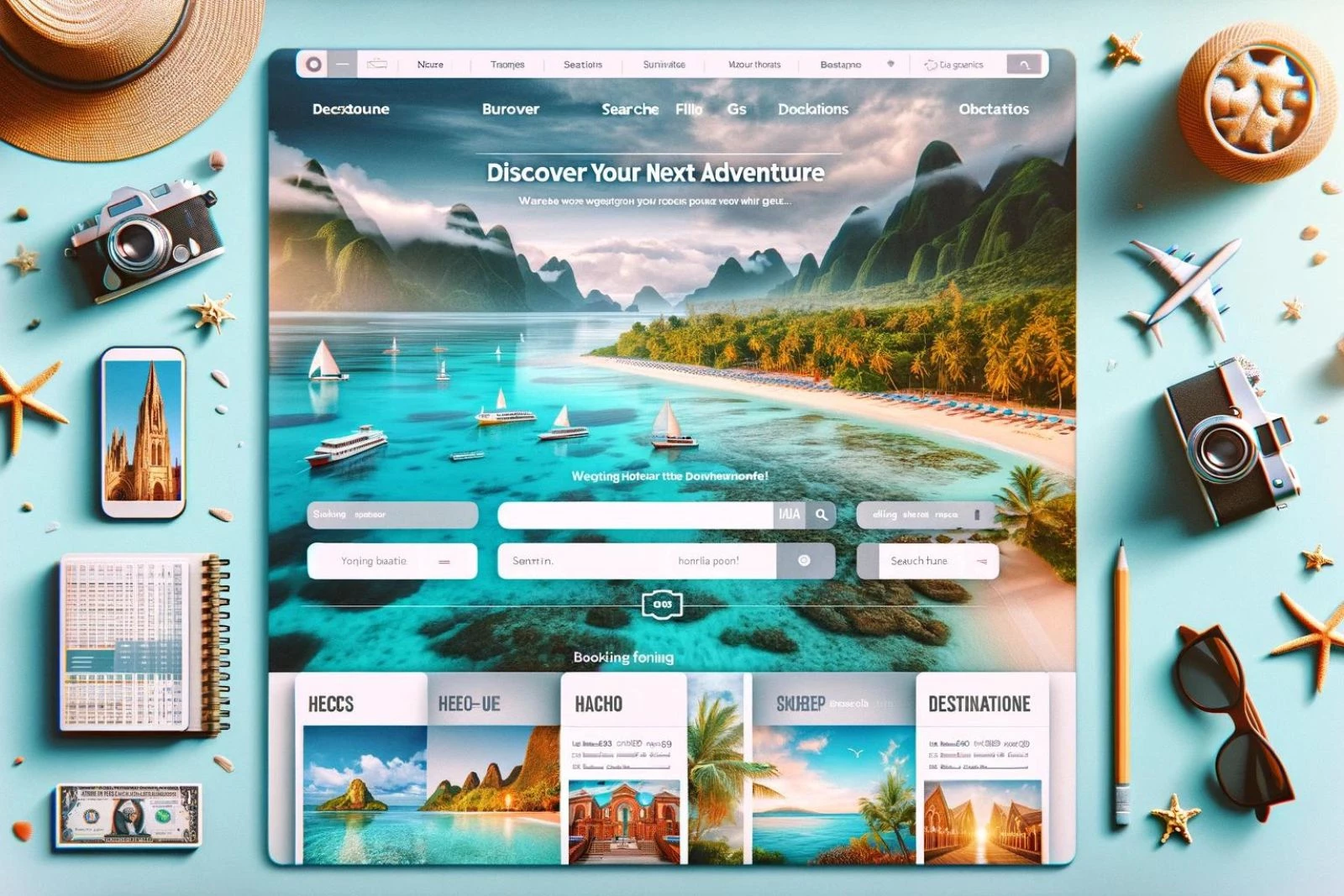
Craft immersive online experiences with our web design services for tourism & resorts. Engage travelers and drive bookings with stunning visuals and intuitive navigation
In the realm of hospitality and tourism, the digital landscape plays a pivotal role in shaping travelers' perceptions and influencing their decisions. As more travelers turn to the internet to research destinations and plan their trips, the importance of a well-crafted website for resorts cannot be overstated. In this article, we'll delve into the nuances of web design for tourism and explore how resorts can create immersive online experiences to attract and engage visitors.
Web design for tourism and resorts encompasses the art and science of creating visually stunning, user-friendly websites that showcase the unique offerings and experiences of a destination. Whether it's a luxury beach resort, a boutique hotel nestled in the mountains, or a sprawling wellness retreat, the website serves as a virtual gateway for travelers to explore and discover what the resort has to offer.
Compelling Visuals: High-quality images and videos are the cornerstone of effective resort websites. Stunning visuals that showcase the natural beauty, amenities, and experiences available at the resort can captivate visitors and inspire them to book their stay.
Intuitive Navigation: A user-friendly navigation structure is essential for guiding visitors through the website seamlessly. Clear menus, intuitive search functionality, and logical page hierarchy ensure that users can find the information they need quickly and easily.
Mobile Responsiveness: With the rise of mobile browsing, it's crucial for resort websites to be fully responsive across all devices and screen sizes. Mobile-friendly design ensures that travelers can access the website conveniently, whether they're browsing on a smartphone, tablet, or desktop computer.
Compelling Content: Engaging and informative content is key to capturing the attention of prospective guests. Compelling storytelling, detailed descriptions of accommodations and amenities, and engaging blog posts about local attractions and activities can enrich the user experience and foster a connection with the resort.
Online Booking & Reservation System: An integrated booking and reservation system streamlines the booking process for travelers, allowing them to check availability, view room options, and make reservations directly through the website. A seamless booking experience enhances convenience and encourages conversion.
Social Proof & Reviews: Testimonials, guest reviews, and social proof play a significant role in influencing travelers' decisions. Incorporating user-generated content, such as guest reviews and ratings, can build trust and credibility, reassuring potential guests of the resort's quality and reputation.
Interactive Maps & Virtual Tours: Interactive maps and virtual tours offer immersive experiences that allow travelers to explore the resort virtually. From interactive maps highlighting amenities and points of interest to 360-degree virtual tours of accommodations and facilities, these features provide a glimpse into the resort experience.

Reflect the Brand Identity: The website should reflect the unique personality and brand identity of the resort, conveying its distinctiveness and appeal to target audiences.
Optimize for Search Engines: Implementing SEO best practices ensures that the website ranks well in search engine results, making it more discoverable to travelers searching for accommodations in the destination.
Prioritize Speed & Performance: Fast load times and smooth performance are critical for providing a positive user experience. Optimizing website speed and performance enhances usability and reduces bounce rates.
Stay Updated & Relevant: Regularly updating the website with fresh content, promotions, and special offers keeps it current and relevant, encouraging repeat visits and engagement.
Integrate Social Media: Social media integration enables resorts to extend their online presence and engage with guests on popular platforms like Facebook, Instagram, and Twitter. Sharing user-generated content and leveraging social media influencers can amplify the resort's reach and visibility.
In conclusion, effective web design plays a crucial role in shaping the success of tourism and resort websites. By focusing on compelling visuals, intuitive navigation, mobile responsiveness, and engaging content, resorts can create immersive online experiences that resonate with travelers and drive bookings. Embracing best practices and staying attuned to evolving trends in web design can help resorts stay competitive and thrive in the dynamic landscape of hospitality and tourism.
Use responsive design techniques to optimize the website's layout and functionality for various screen sizes, ensuring seamless access and navigation on smartphones and tablets.
Showcase guest testimonials, ratings, and reviews to build trust and credibility, reassuring potential guests of the resort's quality and reputation.
Craft compelling storytelling, descriptive accommodations and amenities, and informative blog posts about local attractions and activities to engage visitors and inspire them to explore further.
Implement SEO best practices such as keyword optimization, meta tags, image alt text, and quality content creation to improve search engine rankings and increase visibility.
Maintain brand consistency by using cohesive design elements, color schemes, typography, and messaging throughout the website, reinforcing the resort's identity and reinforcing its brand image.



